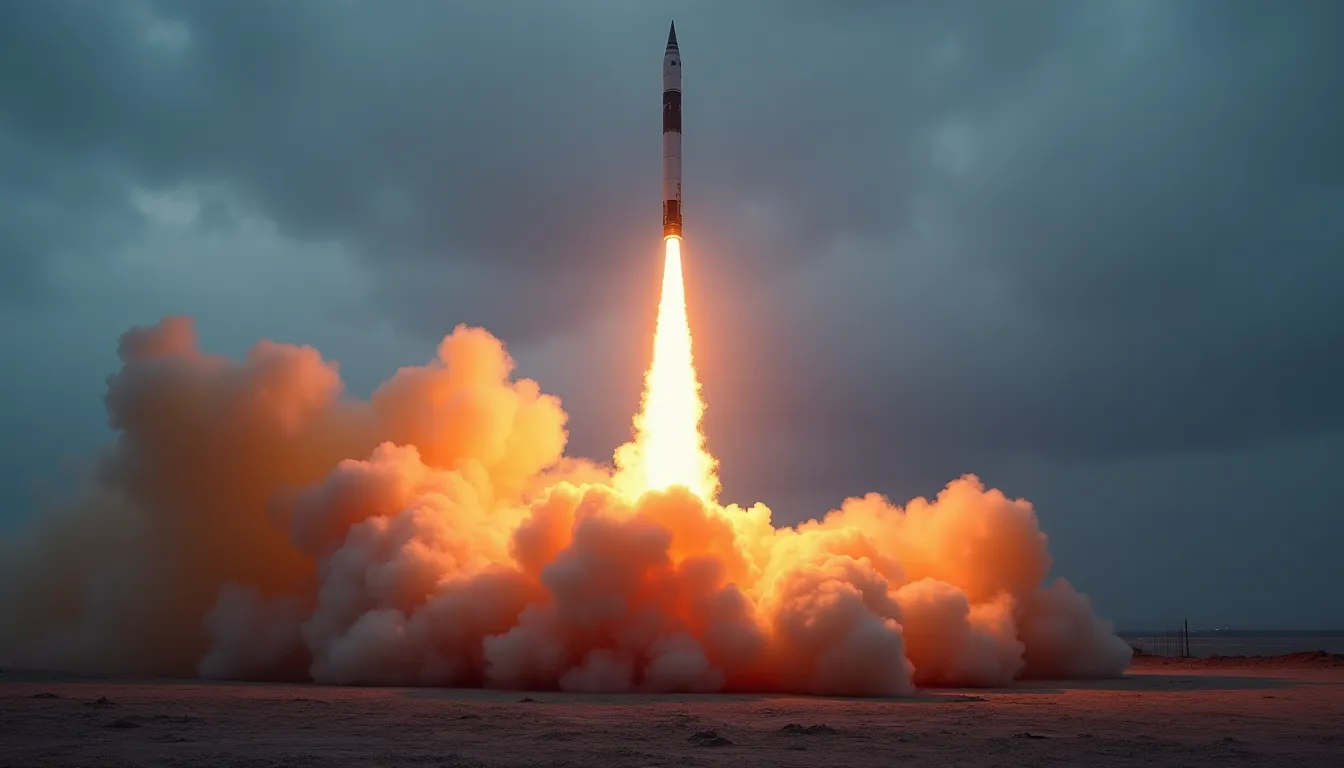In recent months, the aerospace and defense sector has witnessed significant advancements in missile technology and defense strategies. These developments reflect ongoing efforts to modernize military capabilities in response to evolving global threats. From the U.S. Army’s innovative missile defense strategies to updates in export controls and international collaborations, the landscape of missile defense is rapidly changing.
U.S. Army’s New Missile Defense Strategy
The U.S. Army is set to unveil a comprehensive missile defense strategy that leverages cutting-edge technologies, including artificial intelligence (AI) and human-machine collaboration. Central to this strategy is the Integrated Battle Command System (IBCS), which allows for seamless connectivity between various sensors and weapon systems on the battlefield. This integration facilitates dynamic defense prioritization, ensuring that the most pressing threats are neutralized swiftly.
A notable aspect of this strategy is the focus on “smart missile defeat” capabilities. This approach emphasizes neutralizing missile threats before they can be launched, rather than solely relying on interceptor systems. By incorporating AI into the operational framework, the Army aims to reduce cognitive overload for operators and enhance homeland defense capabilities, particularly under the expanding role of the Space and Missile Defense Command.
This shift towards a more integrated and proactive missile defense posture underscores the increasing complexity of missile threats in modern warfare, where adversaries may deploy coordinated salvos of missiles and drones. By combining offensive and defensive capabilities, the U.S. military is preparing to tackle these challenges head-on.
Updates to Missile Technology Control Regime (MTCR)
On September 15, 2025, the U.S. State Department announced pivotal updates to the Missile Technology Control Regime (MTCR). The revised guidance reclassifies certain unmanned aerial systems (UAS) to be evaluated similarly to fighter aircraft rather than traditional missiles. This significant change aims to ease export restrictions and facilitate access for allied nations to advanced UAS capabilities, reflecting the strategic importance of drones in contemporary military operations.
The MTCR update acknowledges the evolution of missiles and drones from specialized weapons to mainstream precision-guided munitions. As global military dynamics shift, this reassessment is crucial for adapting proliferation policies to meet modern challenges. By allowing greater flexibility in exports, the U.S. is not only enhancing its partnerships but also fostering a more robust international defense landscape.
Ukraine’s Drone Production and U.S. Military Collaboration
In a landmark initiative, Ukraine is reportedly in negotiations to produce millions of drones annually for the U.S. military, with a projected output of up to 10 million drones under a $50 billion framework. This collaboration leverages Ukraine’s extensive experience in drone warfare and advanced technologies, including long-range attack drones and uncrewed surface vessels equipped with air-to-air missiles.
The integration of AI in Ukrainian drone systems has enhanced their effectiveness in combat scenarios, reflecting an evolving tactical approach to drone warfare. This partnership could significantly accelerate U.S. drone production capabilities, particularly in lower-end drone systems, enabling faster responses to emerging threats. As the importance of unmanned systems continues to grow, this collaboration highlights a strategic pivot towards incorporating innovative technologies into military operations.
Iran’s Missile and Air Defense Enhancements
In the Middle East, Iran is reportedly advancing its missile and air defense capabilities in response to vulnerabilities exposed during recent conflicts with Israel. Notable efforts include bolstering short-range air defenses to counter increasing drone threats and pursuing the acquisition of HQ-9 long-range surface-to-air missile batteries from China. These enhancements signify Iran’s commitment to strengthening its missile defense posture amid escalating regional tensions and potential conflicts.
By upgrading its air defense systems, Iran aims to effectively counter advanced aircraft like the Israeli F-35, thereby enhancing its deterrent capabilities. These developments are indicative of the broader arms race in missile technology and the importance of advanced defense systems in ensuring national security.
Russia’s Proposal for New START Treaty Extension
In a related geopolitical context, Russia has proposed a one-year extension of the New START treaty, which regulates the limits on strategic nuclear warheads and delivery systems. While this proposal does not directly address missile technology development, it plays a crucial role in arms control and global stability. The U.S. response to this proposal remains pending, and its implications for missile defense strategies could be significant as both nations navigate complex security challenges.
Conclusion
The recent developments in missile defense strategies, export controls, and unmanned systems integration underscore a transformative period in the aerospace and defense sectors. As nations adapt to new technologies and shifting geopolitical landscapes, the emphasis on advanced capabilities, particularly in missile defense and drone warfare, will only intensify. The future of military engagement will likely hinge on these innovations, shaping a new era of defense strategies that prioritize agility, integration, and technological advancement. As we move forward, the collaboration between nations and the integration of emerging technologies will be paramount in addressing the complexities of modern warfare.
References
-
Ukraine Deep In Talks To Sell U.S. Millions Of Drones - The War Zone (www.twz.com) - 10/3/2025 The move comes as Washington considers the transfer of longer-range weapons to Ukraine, including Tomahawk cruise missiles. By Thomas Newdick. 1 …
-
Russia Proposes One-Year New START Extension (www.armscontrol.org) - 10/2/2025 New START, which limits U.S. and Russian nuclear forces to 1,550 strategic warheads and 700 strategic launchers deployed on each side, will …
-
Iran Update, October 2, 2025 | Critical Threats (www.criticalthreats.org) - 10/2/2025 Former Islamic Revolutionary Guards Corps (IRGC) Navy Commander emphasized the role that Iran’s ballistic missile capabilities and national …
-
A Marie Kondo Moment for MTCR: Tidying Up the U.S. Approach to … (www.csis.org) - 9/23/2025 On September 15, 2025, the State Department announced modified guidance for implementing the Missile Technology Control Regime (MTCR), the …
-
Air and Missile Defence Technology Conference 2025 - ASDEvents (www.asdevents.com) - 9/12/2025 The conference will provide a unique insight into those at the forefront of developing open architecture integrated air and missile defence networks for NATO.
-
US Army readies to release new missile defense strategy soon (www.defensenews.com) - 8/5/2025 The Army’s new air and missile defense strategy incorporates emerging technology like artificial intelligence to handle growing, …
-
Next Generation Missiles and Hypersonics Summit 2025 - IDGA (www.idga.org) - 8/5/2025 The Next Generation Missiles and Hypersonics Summit is here for 2025! Hypersonic weapons and advanced missile systems are transforming the future of warfare …
-
2025 Air And Missile Defence Technology Conference (www.space-careers.com) - 1/1/2025 The conference will provide access to those at the forefront of GBAD, Ballistic, Cruise and Hypersonic Missile Defence, Directed Energy, C-UAS, Integrated and …



